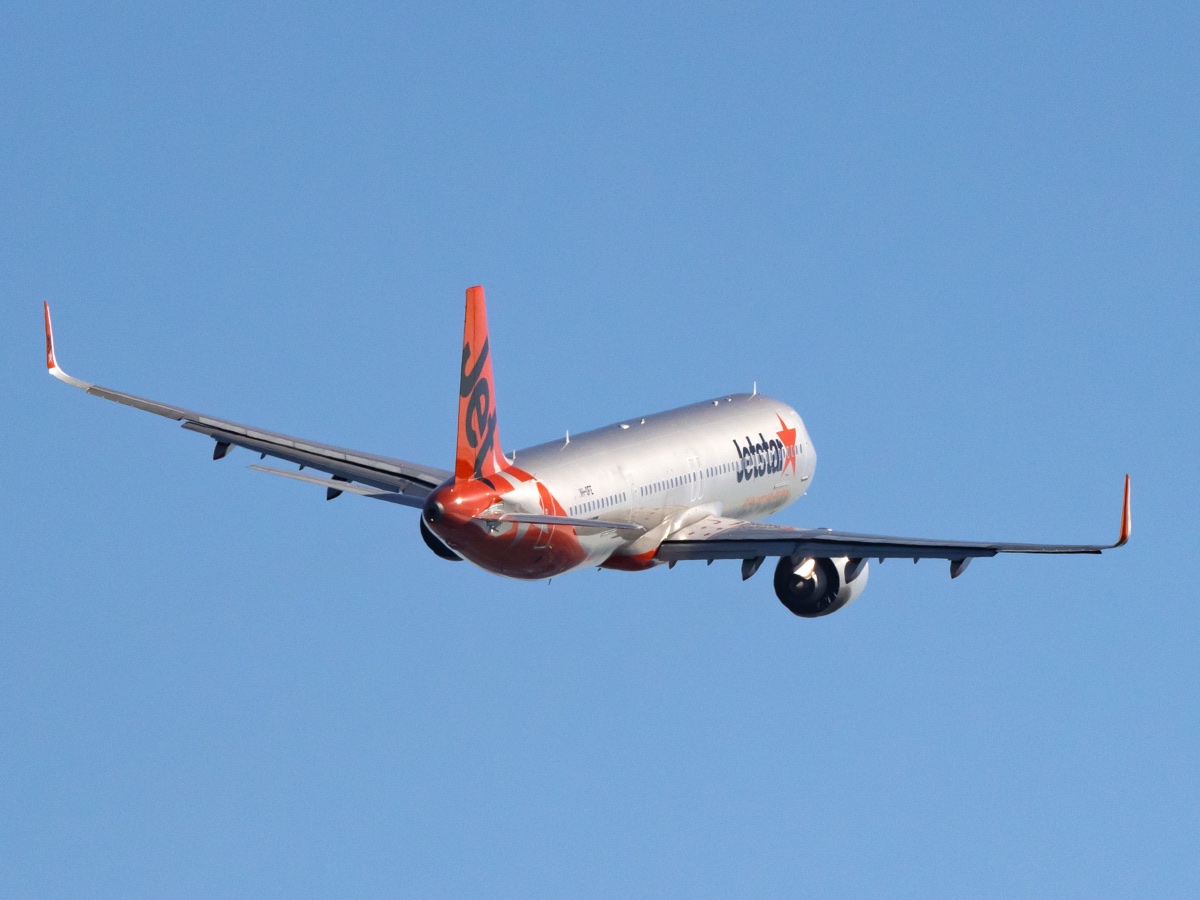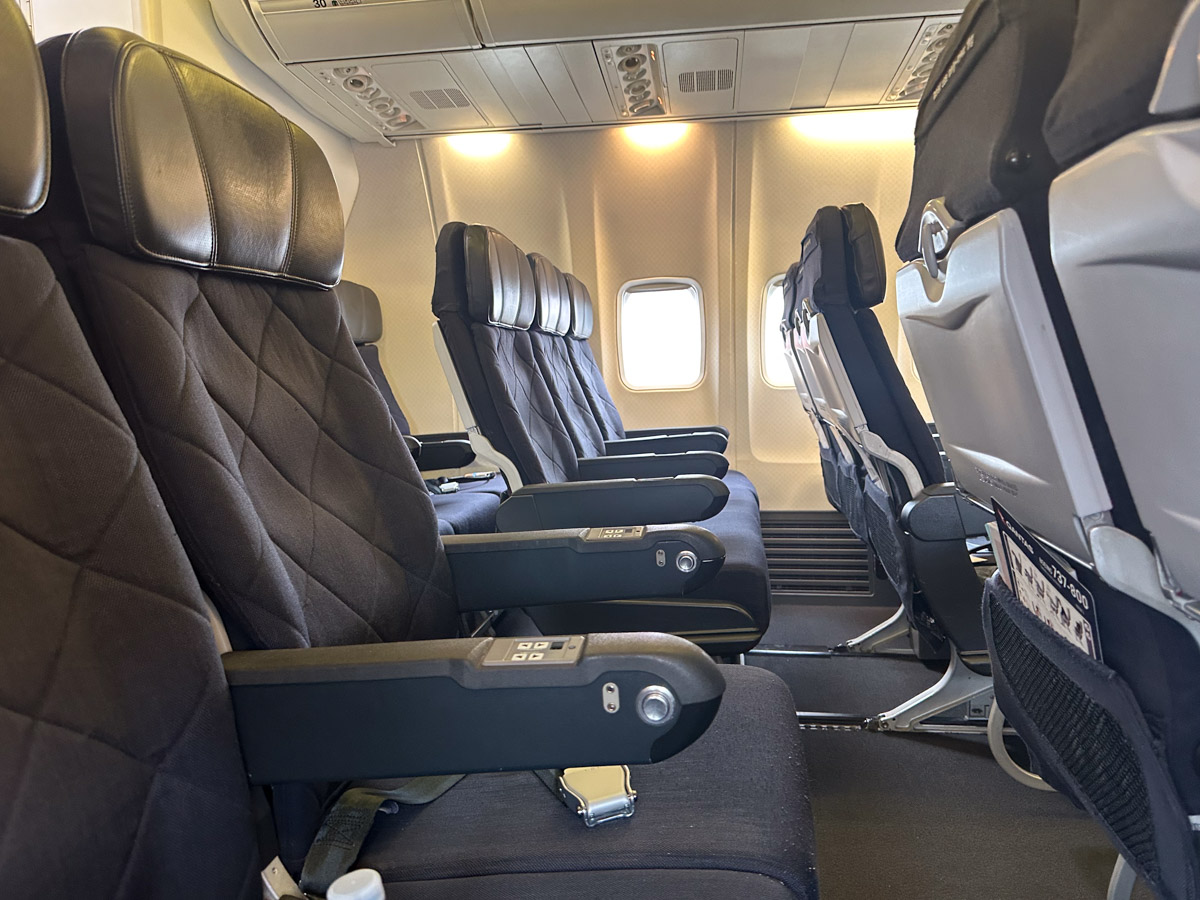The Benefits of Sitting at the Back of the Plane

Many frequent flyers prefer to sit as close to the front of the cabin as possible. Those up-front seats are so highly sought-after, in fact, that many airlines charge extra for them – or reserve them for their top-tier frequent flyers.
On some airlines, the up-front seats provide a bit more legroom. But even when this isn’t the case, many people just seem to like sitting close to the front. The most logical explanation I can think of is that you’ll probably be one of the first off the plane, and you’ll often get served first as well. I guess, psychologically, it might also make some people feel special?
Indeed, I do often choose to sit near the front of the plane. But on several recent flights, I’ve chosen to sit towards the back of the cabin instead; in some cases, in the very last row of the plane. Every time I’ve done this, I’ve actually had a great flight!
Yes, the last row is usually close to the toilets. I will acknowledge that, especially on longer flights, this means there are often people queuing for the bathrooms beside the aisle seats in the last row, which could get a bit annoying. That said, for some people, being closer to the bathroom could also be a benefit.
Here are some of the other reasons that sitting in the last row of the plane could be beneficial…
Guilt-free recline
Admittedly, on some airlines and aircraft types, the last row might not fully recline due to the wall behind it. And on some specific aircraft, like the British Airways Airbus A320neo for example, there are also no windows in the very last row. Occasionally, like on the Jetstar A321neo LR, the seats in the last row might even be slightly narrower due to the curvature of the fuselage.

OK, I realise I’m not really selling the last row very well so far… but hear me out. 😉
While there are some specific examples where the last row is worse, this isn’t always the case. It just pays to check the seat map using an accurate source like AeroLOPA and do your research.
Usually, the seats in the last row of the plane are just like all the others, except there is nobody sitting behind you. Assuming your seat still has full recline, this means you can fully recline your seat during the cruise without needing to worry about inconveniencing anybody. You also get a 100% guarantee that there won’t be a kid (or even an adult) sitting behind you kicking your seat.
Be among the first off the plane (when the rear door is used)
Yes, sitting closer to the front of the plane usually means that you’re among the first to disembark. But if you’re flying on an airline that uses both the forward and rear doors for boarding, you might actually get off sooner if you’re in the last row of Economy, rather than the first row. That’s because, once the rear door is open and ready for disembarkation, the Business Class passengers at the very front of the plane might still be getting off.
If you happen to be flying an ATR-72, like I did with TAG Airlines last year, this aircraft only boards using the rear door. So sitting at the back is definitely your ticket to getting off faster.

Fewer people sit towards the back
Sometimes, a bit of game theory can help you with aircraft seat selection. Since many people psychologically prefer to sit towards the front, I often find that the last rows of the plane are the last to get filled – at least, on some airlines. I’ve often noticed on Qantas Boeing 737 flights, for example, that the front half of the Economy cabin might be quite densely packed while the last five rows only have two or three passengers.

The same theory is why I’ll often choose to pay a little bit more for a “preferred” seat on airlines that don’t allow passengers who haven’t paid that extra fee to sit there. That’s because most other people don’t pay, and these seats are therefore often the last to be allocated. It means I’ll often get an empty neighbouring seat, or even the whole row to myself!

Better service
On several Qantas and QantasLink flights between Sydney and Canberra, I’ve received much better service than usual as a result of sitting in the last row. On each occasion, a flight attendant has been standing at the back of the cabin during boarding and we’ve had a bit of a chat.
Since the last row is also the closest to the galley (on these particular aircraft types), the crew then went on to offer me extra drinks and snacks. They could easily and subtly do this because I was sitting so close to their work area.
Now, of course I never board a flight expecting this, and there’s no guarantee this will always happen. In fact, each time this has happened, the offer of extra drinks and snacks was a genuine pleasant surprise. On the Dash 8 flights, I actually often choose a window seat in the last row because the view is less obstructed there by the propeller. But if you’re nice to the crew, and it’s easy for them to look after you, you never know…

On some plane types: Fewer seats per row
On wide-body aircraft like the Boeing 777 or Boeing 787, the last rows of Economy Class often have fewer seats because the cabin is slightly less wide. With Etihad’s Boeing 777, for example, the last few rows of Economy have a 2-4-2 seating layout instead of the usual 3-4-3.
Those pairs of seats at the back of the plane are great for couples. If you’re on a window seat in this section, you might even get a bit of extra space to the side of your seat.
The back of the plane is statistically safer
Of course, flying is extremely safe overall so this isn’t something that I personally seriously consider when choosing a seat. But statistically speaking, the seats towards the back of the plane do have a higher survivability rate in the infinitesimally unlikely chance that the plane crashes. Indeed, in the recent Jeju Air accident, the two flight attendants sitting at the very back of the plane were the only survivors.
Share your thoughts on the AFF forum
Are you a fan of the last row of the plane, or do you prefer to stick closer to the front? Let us know by joining the discussion on the Australian Frequent Flyer forum!



Community Comments
Loading new replies...
Join the full discussion at the Australian Frequent Flyer →